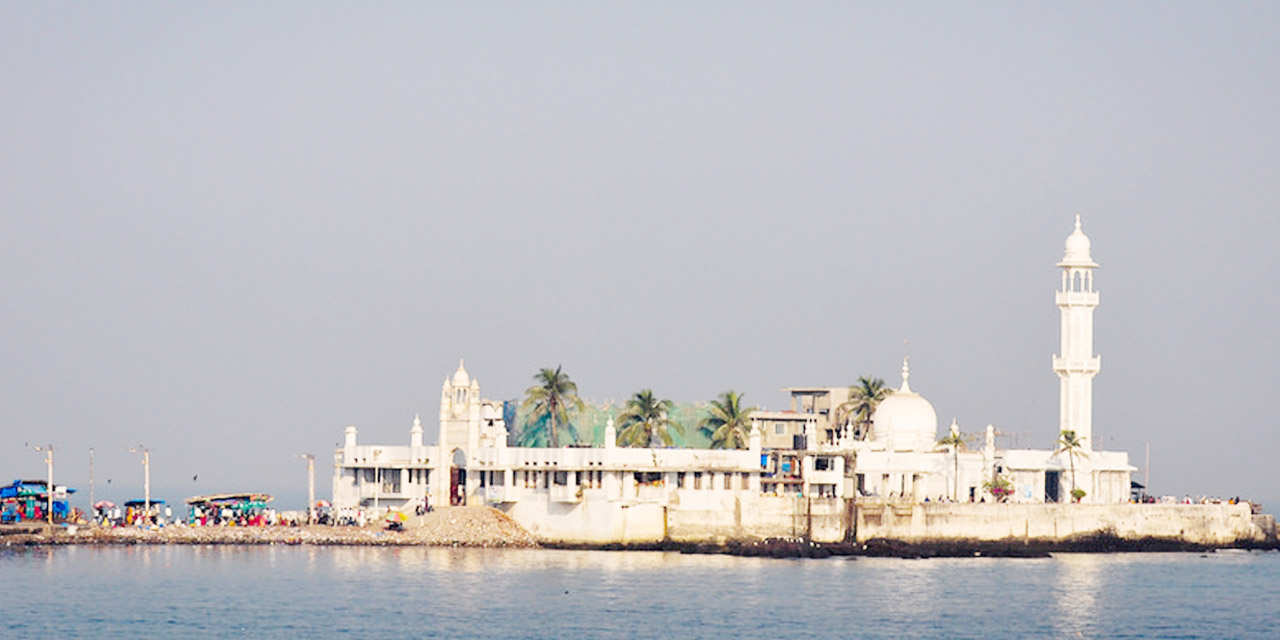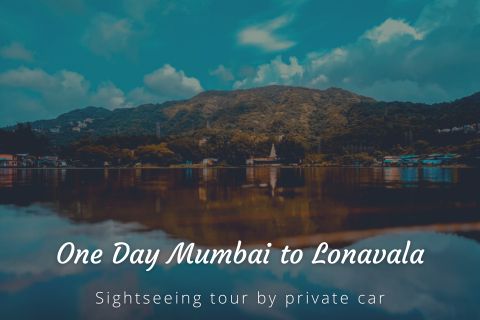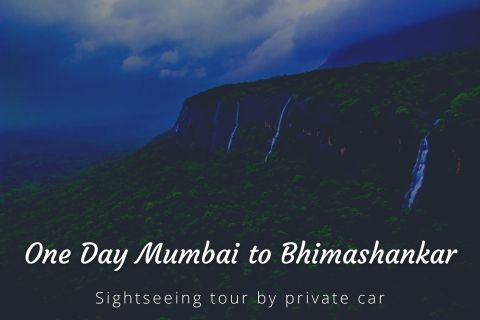
Haji Ali Dargah Mumbai Entry Fee
- No entry fee
Haji Ali Dargah Mumbai Phone
022 2352 9082
+91 98217 29595
Rating:  | 4/5 stars
| 4/5 stars
Based on total 59 reviews
Haji Ali Dargah Mumbai Address: Dargah Rd, Haji Ali,Mumbai, Maharashtra,400026,India
Mumbai City Tour Packages
Haji Ali Dargah Mumbai Timings
| Day | Timing |
|---|---|
| Monday | 6:00 am – 9:45 pm |
| Tuesday | 6:00 am – 9:45 pm |
| Wednesday | 6:00 am – 9:45 pm |
| Thursday | 6:00 am – 9:45 pm |
| Friday | 6:00 am – 9:45 pm |
| Saturday | 6:00 am – 9:45 pm |
| Sunday | 6:00 am – 9:45 pm |
Mumbai’s Islamic population knows better than anyone else how famous their Haji Ali Dargah is. Made even more popular by Bollywood movies and songs, this worship house is now also a top sightseeing places of Mumbai. The Haji Ali Dargah sits beautifully on an islet, just off the Worli coastline. Its location is another reason why this shrine appears so enigmatic. This mosque is also a tomb, erected in the year 1431, for a Sufi saint named Haji Ali Shah Bukhari. The pebbled pathway that leads to this white ‘dargah’ (an Urdu term, meaning ‘tomb’) makes for a nice walk, with the waters of the Arabian Sea lapping over the land.
Haji Ali Dargah Timings, Entry Fee & Namaz Schedule
This mausoleum is open to visitors on every day of the week from 6 AM until 9:45 PM, and you don’t have to be Muslim to enter here. Nevertheless, you will mostly find devotees specifically from the Islamic faith when you visit this dargah. There is no entry fee, but donations are accepted. A portion of the money received by the trust goes towards the maintenance of Madrasas (Islamic schools) and the funding of scholarships.
Photography is not permitted inside the mosque. However, you will be able to take photos of the picturesque white structure from outside, especially from the narrow pathway which connects this islet to the mainland in South Bombay.
The Islamic prayer or namaz is offered five times a day:
- Fajr: This Arabic word meaning ‘dawn’ is the term for the first prayer of the day which is offered before sunrise.
- Zuhr: This is the second prayer which is offered at noon when the sun is at its peak.
- Asr: The third prayer is offered later in the afternoon.
- Maghrib: Just after sunset, the fourth prayer is offered.
- Isha: The final prayer is made in the night time.
Image Gallery of Haji Ali Dargah Mumbai
History Behind the Haji Ali Dargah
The Haji Ali Dargah was constructed to commemorate the Sufi saint Sayyed Pir Haji Ali Shah Bukhari. The old mosque was first built in 1431, but the building you can currently see is a result of the 20th century reinforcements.
Pir Haji Ali Shah Bukhari spent his final years in Mumbai and dedicated himself to spreading Islam. His death wish was that his shroud (or kafan) should be dropped in the ocean so that his dead body could be buried wherever it was found. Incidentally, his shroud happened to float near the Worli Bay. Therefore, his followers decided to build a tomb right in the middle of the sea. They also built a mosque in the same complex.
In 1916, the dargah came under the purview of the Haji Ali Dargah Trust. Thereafter, a sanatorium was added to the complex in 1950, along with an entrance gate. Later, in 1964, the mosque and the Dargah Sharif underwent huge renovations and remodelling. The narrow pathway that leads to the masjid was also redone by 1990. After all the reconstruction, the entire site now occupies a space of 5000 square metres.
Architecture of Haji Ali Dargah
The Haji Ali Dargah sports Indo-Islamic architecture from the Mughal period. This is evident in the set of minarets and domes that fill the area. The main gate which welcomes everyone is fortified with reinforced concrete cement. On the outside, it has a smooth layer of marble which makes it gleam from afar, especially in the afternoon. On Islamic festivals, this gate is lit up in green to signify purity.
The tallest minaret in the complex is 85 feet high. It is from here that the Muezzin (a person of good character) appointed by the mosque calls out to all the Muslims to worship at the five designated times of the day.
The central courtyard of the complex is made of marble, which also makes it convenient for those who prefer to walk barefoot. The Dargah Sharif stands at the centre, pristine white form the outside. When you enter it, you find the tomb of Sayyed Pir Haji Ali Shah Bukhari wrapped in a gorgeous carpet (called chaddar) and a zari cloth. The carpet has fine brocade work all over it, mostly in green, red and golden.
One can see a lot of flowers and offerings from visitors on this. A frame of silver encases the tomb, and the entire structure is surrounded by eight pillars of marble. This is further topped by a crown.
The ceiling in the main hall is also of marble and has coloured mirror patterns decorating its surface. Also visible are Arabic designs which actually spell out various names (ninety nine to be specific) of the Muslim god – Allah. You will also notice verses from the Quran Sharif, written on the ceilings and the walls.
The complex has prayer rooms dedicated for male and female worshippers. The main hall is flanked on three sides by other halls – East, West and South. The East Hall is reserved for men to say their prayers, while women worship in the West Hall.
Apart from this, there is a three storey sanatorium and a Qawwal Khana where Qawwali performances are held. Qawwali is a traditional Islamic musical performance where all the singers and instrument players are seated on the floor. While pop culture knows this art form only through Bollywood songs, the type of Qawwali performed inside the Haji Ali Dargah is devotional in nature.
Who was Haji Ali?
Sayyed Pir Haji Ali Shah Bukhari was a rich merchant from present-day Uzbekistan who was known for his kindness and often regarded as a Sufi saint. This Muslim merchant from Bukhara spent his early years, in the 15th century, travelling around the world. Before he was to make the mandatory Islamic pilgrimage to Mecca, Pir Haji Ali Shah renounced all his possessions. He finally settled in Mumbai’s Worli neighbourhood, quite close to where his tomb is now kept. He spent his time in India teaching people about Islam and spreading his faith.
There is a legend that Haji Ali once came across a poor lady sobbing on the street because she had spilled the oil which she was carrying back home. He accompanied her to the place where she spilled the oil, and made the earth spew it out with a press of his thumb. Despite solving the woman’s problem, Pir Haji Ali was disturbed that he had hurt the earth, so he left for India.
Things to do at the Haji Ali Dargah
You can explore this dargah sequentially and systematically:
1. Begin your 640-metre long walk along the causeway from Lala Lajpat Rai Marg (also known as Hornby Vellard).
2. Snap as many photos as you can before you reach the shrine as you won’t be able to use your camera any further.
3. Share some food with the destitute who line up along the pathway. It is not good for people to hungry as long as we have food.
4. Marvel at the immaculate white form of the masjid complex once you reach. Enter the impressive arched gate and explore the marble-floored area.
5. Cover your head with a scarf or a kerchief so you don’t hurt the sentiments of the worshippers at the dargah.
6. Use the correct gate to enter the shrine. Remember, it is the East Hall for men and the West Hall for women.
7. Do not make unnecessary loud noises inside. If you must talk to your friends, keep your tone hushed.
8. Observe the intricate interiors and the exquisitely decorated tomb of the Sufi saint Sayyed Pir Haji Ali Shah Bukhari. If you have brought some flowers or offerings with you, now is the time to give it.
9. Enjoy the calm and peace of the mirrored hall.
10. Sometimes, they give you sweets or cooked food. You can consume that before you return.
11. Enjoy the sunset while sitting on the long bench on islet as the sky changes shades over the Arabian Sea.
12. If you visit in the evening and happen to be there on the day of a Qawwali performance, make sure you watch the show.
Interesting Facts About the Haji Ali Dargah
There are a few things about this masjid that you perhaps may not have known:
1. On the second day of Eid-ul-Uzha or Bakri Eid and that of Ramadan Eid, the number of visitors to the mosque increase to a few lakhs. Even on a daily basis, Haji Ali attracts at least 10 thousand devotees, with the number going as far as 30 thousand on Thursdays, Fridays & Sundays.
2. The causeway that leads to the Haji Ali Dargah is sometimes submerged during high tide. As a result, the islet appears to be floating in the middle of the sea, with no access to the mainland. This also means that the dargah becomes closed to the public and those who are already in, cannot make their way to Lala Lajpat Rai Marg on the mainland.
3. One side of the 700-yard long causeway that connects the Haji Ali Dargah to the mainland is lined with beggars who hope to receive their sustenance from visiting philanthropists.
4. The mosque can hold thousands of people at the same time.
5. It is believed that whoever prays for something at the tomb has his wish fulfilled. Many devotees with wishes ranging from wealth to wedding and children, have reported to have those granted.
6. Semi precious and precious stones embellish some parts of the minaret and the masjid.
7. The sanatorium in the complex has thirty apartments with either one bedroom or two bedrooms each. It is possible to rent these for a maximum duration of 3 months. The rates are unbelievably low – only INR 150 to INR 600 per month! Consider that it is almost impossible to be able to afford an apartment in a posh sea-facing location in South Bombay.
Things to Keep in Mind While Visiting the Haji Ali Dargah
Some things to go over before your visit to this mausoleum:
1. Conservative dressing is advised for both men and women. You will be required to cover your head when you enter the mosque (but not when you are crossing on the causeway.
2. Before you enter the shrine, remove your footwear.
3. The sun can be a tad too hot in the afternoons. So make sure your wear some sunscreen lotion and carry a parasol or a hat with you.
4. The crowds soar on Thursdays, Fridays and Sundays. So, plan your visit accordingly.
5. The entire trip can be dehydrating at times. You can enjoy some juice or frozen desserts from the Haji Ali Juice Centre right before the causeway begins from the mainland.
6. During high tide, the causeway becomes submerged in sea water. Listen to the guards and try not to cross over to the other side until it’s time for low tide when the pathway is visible again.
Places to Visit Near Haji Ali Dargah
After you are done exploring the Haji Ali Dargah, you can make your way to a number of sightseeing spots nearby:
1. Mahalaxmi Temple: Located only 500 metres away on Bhulabhai Desai Road, this Hindu temple is dedicated to the mythological goddess Mahalaxmi. Built in the late eighteenth and early nineteenth century, this temple has three idols of goddess Mahakali, Mahalakshmi (goddess of wealth and prosperity), and Mahasaraswati (goddess of wisdom and learning).
2. The National Museum of Indian Cinema: This brand new museum was recently unveiled on 19th January in 2019. Open from Tuesday to Sunday from 11 AM to 6 PM, entry to the museum only costs INR 20 for Indian adults. If you are a child below the age of 12 or a student, you can enter for free. Foreigners will have to pay INR 500 for each ticket. Movies are screened daily from 4 PM to 5 PM at one of the auditoriums here.
3. Mahalaxmi Race Course: Perhaps the most upscale place to hang out in Mumbai, this horse racing track remains a favourite with the city’s elite population. Spread over 225 acres of oval land, the place also serves as the only helipad open to civilians. If you wish to see a race, visit between mid-November and April. At other times, you can learn to ride a horse, join a Tai Chi class in the morning or just run around the track. During the derbies, remember to be impeccably dressed as dress codes are strictly followed here.
4. Nehru Planetarium: Barely a kilometre from the Haji Ali Dargah, this planetarium is a must-visit spot for children and adults alike. There are plenty of interactive exhibitions and models at this Science wonderland which will help you understand a lot of Physics principles in a fun and easy way. There is a dome-theatre in the complex where short films on astronomy are screened. On certain winter nights with clear skies, the Nehru Planetarium also holds special star-gazing sessions where the night sky is examined with a giant telescope, in search of constellations, planets and other heavenly bodies.
5. Dhobi Ghat: This is Mumbai’s unique wash-house, and also the largest open-air laundry in the world. This is where most of Mumbai’s textile businesses and hotels send their linen and clothes to be thoroughly cleaned, dried and ironed. The washers are called ‘dhobis’, and they are quite a sight to watch when they are in action. Tours that span at least an hour are offered for visitors to watch how these dhobis scrub and wash clothes in their own washing pen. The clothes are also beaten on a flogging stone for that extra edge in washing.
How to Reach Haji Ali Dargah
The Haji Ali Dargah is conveniently located and can be reached through a number of modes of transport:
Local Trains: If you are travelling on the Central Line, you can get off at Byculla station and then hail a taxi. It is 3.6 km from here and should take about 15 minutes via taxi. If you walk from here, you will take 40 minutes through a shorter route of 2.6 km. On the Western Line, Mumbai Central and Mahalaxmi are the nearest railway stations, both a little more than a kilometre from the shrine. If you don’t find a taxi, you can walk for 20 minutes. For those arriving on the Harbour Line, change into Central Line at Kurla.
City Buses: The closest bus stop to the mosque for the State-run BEST buses is Vatsalabai Desai Chowk. This is at a walking distance from the house of prayer and buses ply every few minutes.
Private Transport: For a comfortable ride, you can hire a private cab (kaali-peeli or black-and-yellow taxi) or a radio taxi run by Uber, Ola, Meru, etc. Parking may be a problem as the area is heavily crowded because of the dargah and the food shops closeby, so avoid driving by yourself.
A trip to Mumbai is incomplete without a visit to the famed Haji Ali Dargah. We at Mumbai Tourism, a division of Holidays DNA make your Mumbai Tour all the more enjoyable with affordable Mumbai City tour packages at your disposal. You can also book a cab from top car rental companies in Mumbai for a hassle free commutation.




